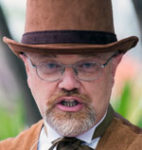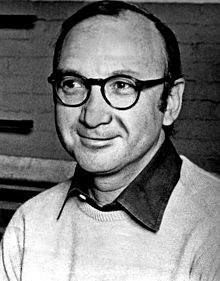By Eric George Tauber


(Wikipedia photo)
CINCINNATI, Ohio — Last Sunday, on the same day that we lost Senator John McCain, we also lost a legend of the American Theatre: Neil Simon. I don’t think there’s a thespian in North America who hasn’t cut their teeth with his works. Other articles have hailed his many stage and screen successes, award nominations and Pulitzer for drama, so I would like to talk about what he has meant to me personally.
When I was an undergraduate student, my acting professor highly recommended Simon for newer actors. His speech was very natural, his characters are eminently relatable and he really knew how to set up a joke. That’s why my scene partner and I chose Last of the Red Hot Lovers for our Acting 101 class final. At twenty years old, I couldn’t relate to Barney Cashman’s mid-life crisis, but I could certainly play the awkward sexual chemistry with my then scene partner.
Sweet Charity was our spring musical with Rachel Rockwell (then called Natalie Heyde) in the title role. (Rachel would later come to the Old Globe as the director of October Sky, which won the Craig Noel Award for Best New Musical.) The brilliance of this book is that the songs came first. The producers approached Simon with the challenge of stringing them together into a coherent narrative. He put Hey, Big Spender into a dance hall with professional “hostesses” and went from there. The biggest challenge was an incongruous jazzy piece called “Rhythm of Life.” He made it the key hymn of a hippie cult whose groovy, charismatic leader was played brilliantly by Sammy Davis Jr. in the movie.
While not particularly religious, a distinctly New York Jewish humor infused Simon’s work. This made him a favorite with the theatre club of Cincinnati’s Jewish Community Center. An incident I did not witness, but heard about from credible sources, happened during a production of The Odd Couple. In one scene, Oscar went up on a line. So, in mid-argument, he said, “I’ll be right back,” and escaped to the wings, leaving Felix hanging. Quickly fed his line by the stage manager, the show went on. When the Aronoff Center for the Arts opened in 1995, this same group revived The Sunshine Boys as the inaugural show of the black box theatre.
For the filming of Lost in Yonkers with Richard Dreyfuss, the location scouts were looking for an area with rowhouse architecture that looked like it was in the throes of the Great Depression. They found it in Newport, Kentucky, just south of Cincinnati. The 1993 film brought much needed attention to the town. It hasn’t completely turned around, but what was once a blighted area now boasts of new condos and a beautiful aquarium.
My all-time favorite gag of Simon’s comes from the first of his autobiographical trilogy, Brighton Beach Memoirs. Simon’s alter-ego, Eugene is a boy who obsesses about what girls look like naked, relentlessly plying his older brother, Stan for information.
Stan: Geez! How horny can you get?
Eugene: I don’t know. What’s the highest score?!
Our Sages teach us that the dead are not truly gone so long as there are those who remember them. The works of Neil Simon will be with us for as long as there are family and friends bickering with love. What makes the Neil Simon canon so classic is not the setup of the jokes, but the great heart with which they are told. Truly, he made an indelible imprint on the American Theatre that will stay with us for generations to come.
L’Chaïm!
*
Tauber, back in Cincinnati on a family visit, is a San Diego-based freelance writer specializing in coverage of the arts. He may be contacted via eric.taubere@sdjewishworld.com